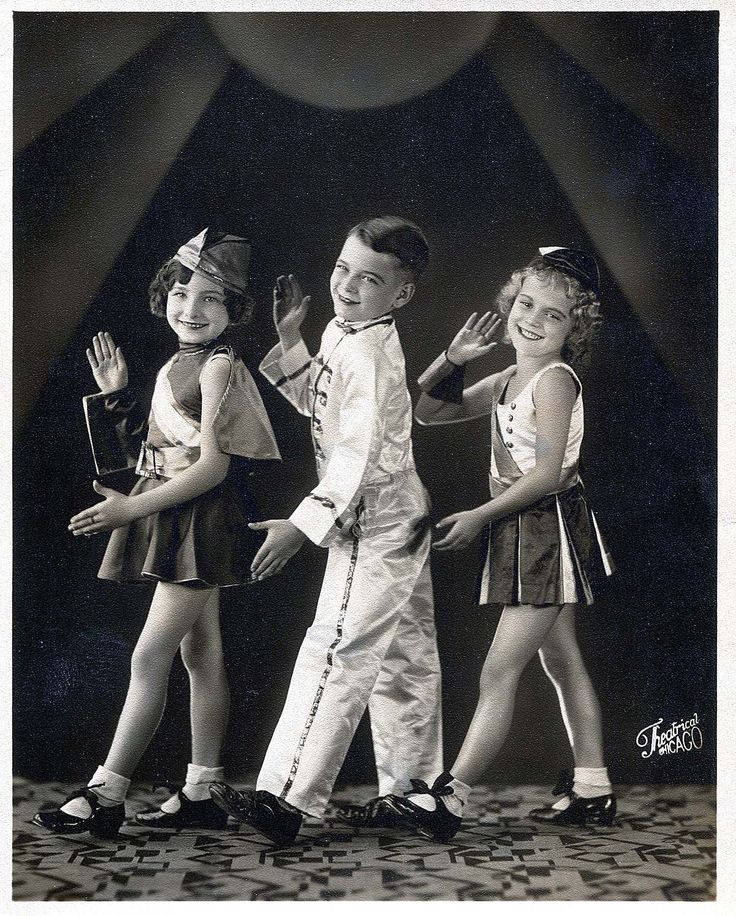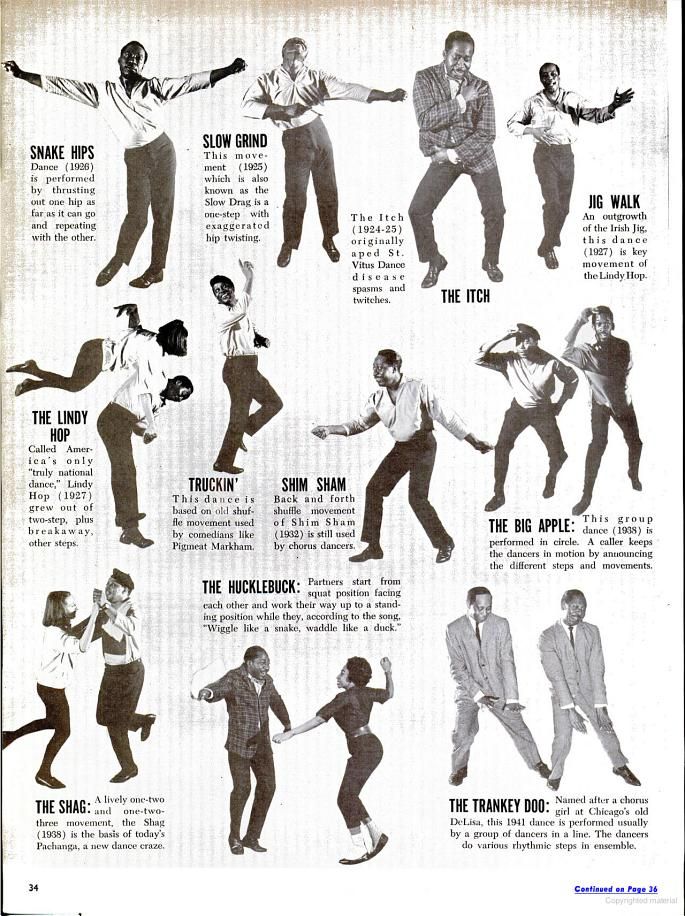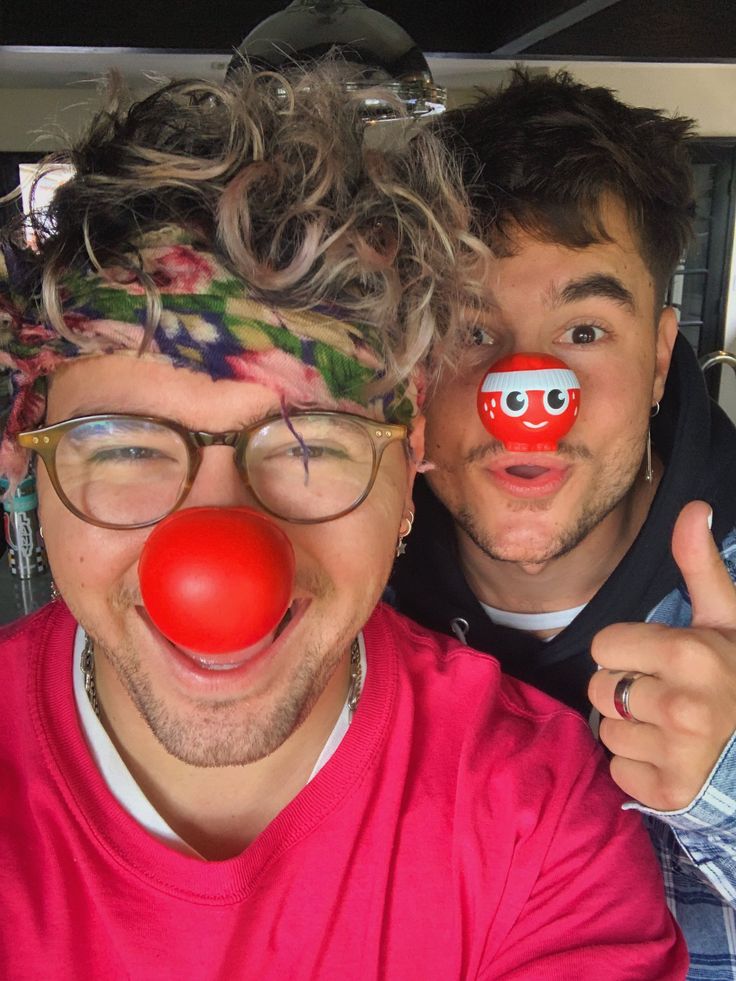How do deaf people dance
How do the Deaf dance?
By: Holly Younghans
January 1st, 2022
I had the privilege of getting to dance semi-professionally and avocationally for over thirty-five years. I cannot imagine my life without music or movement. I had been told that the Deaf "feel" music by experiencing the vibrations, typically proffered through the drum and/or bass lines. I have also seen the Deaf enjoying music through lighting displays synchronized to the music. And then in 2016, a Deaf man, Nyle DiMarco, won the TV show, Dancing With the Stars and I wondered, HOW? I taught ballroom dance for several years; I know what it takes to move like that in harmony with a partner. The man always leads. How did this Deaf man know the music, feel the beat, and lead his partner?
While he undoubtedly had a great resource in his professional partner, Peta Murgatroyd, as DiMarco himself said, "Can a deaf person really dance to the music as perfectly as we did?" I just didn't know if we were really going to be able to do that. We really just took it week to week, worked hard and made it work!"[1] (Kwiatkowski, 2016). It turns out this last statement is something that all Deaf dance artists have in common. It also turns out that there are a great many professional, semi-professional, avocational, and for-the-fun-of-it Deaf dancers. As one author observed, "Dance may be a visual art form, but it's tightly intertwined with sound. Even as the field strives to be more inclusive, learning to dance without two fully functioning ears remains a challenge. But today, dancers with full and partial hearing loss are becoming more visible, thanks to growing opportunities, high-profile role models, and even Instagram"[2] (Ritzel, 2020).
Paul Taylor, a famous modern dance choreographer in the hearing world, was famous for not allowing mirrors in his studios because he thought the dancers relied on them too much and developed bad habits. Deaf dancers need the mirrors, not to stare at themselves, but to watch one another, to stay in sync while they are learning new choreography, develop their spatial understanding of the shape of the choreography, and make adjustments as they go.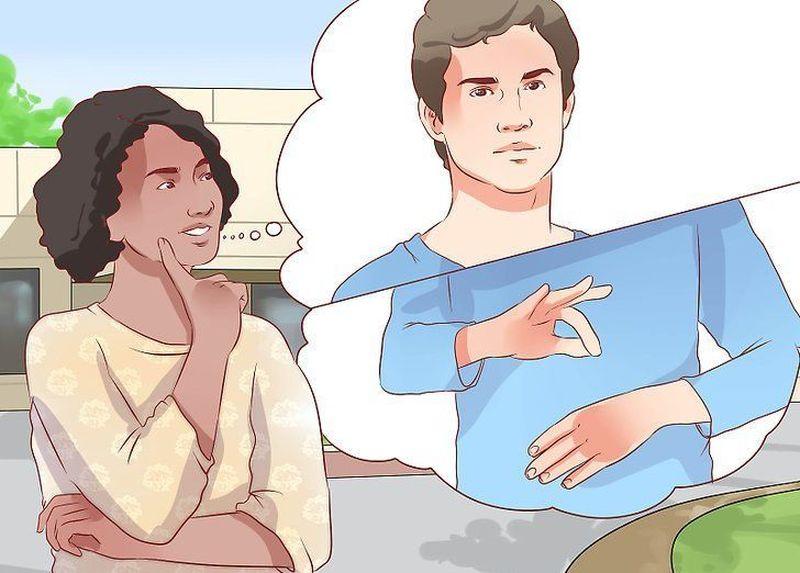 Hearing dancers may do the same, but the level of reliance is not nearly as high.
Hearing dancers may do the same, but the level of reliance is not nearly as high.
It also turns out that I was wrong about the "vibrations" thing, insofar as it comes to serious dancing (i.e., not bouncing around at a club). One professional Deaf dancer, Antoine Hunter, stated, "No. If I jump, I can't feel the vibration. If I'm running around really really fast, I can't feel the vibration. I have to slow down and stay in one place for a while to feel the vibration. So what does that mean? I'm listening. I'm using every intelligence of my being to do what I have to do to make it work"[3] (Egusa, 2020). Using 'every intelligence of one's being' should be applicable to anyone endeavoring to master a specific skill, but, as a former dancer, I can vouch that those of us who can hear are probably not as attentive to this whole being involvement because we take our hearing for granted. Honestly, it's not something we must think about, so we don't.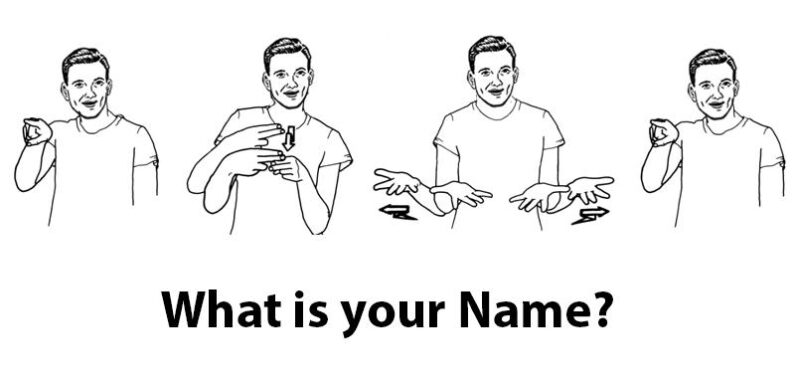 We simply intuitively absorb where we need to be at any given point in the music as we rehearse. Does that free us up for other things or make us lazy? It's hard to say. The leadership of the Gallaudet University dance program expands upon this idea further:
We simply intuitively absorb where we need to be at any given point in the music as we rehearse. Does that free us up for other things or make us lazy? It's hard to say. The leadership of the Gallaudet University dance program expands upon this idea further:
Many people have the misconception that deaf people "hear" by feeling vibrations through the floor. How is this possible, especially if a person is moving and jumping so that they do not keep in continuous contact with the floor? What if the floor is not wood, but solid concrete?The Gallaudet Dancers[4] need many hours of practice in order to develop an inner sense of timing for a specific dance. Some dancers who have some residual hearing may pick up cues from the music to assist them in knowing where they are supposed to be in a dance, but this does not happen the first time they learn a new dance, but rather after countless hours of practice and counting all the movements in a dance step. . .
When a dance instructor is teaching a new dance routine to deaf performers, counting visually helps establish the basic rhythm pattern and facilitates the development of inner rhythm and timing for a particular dance. In addition, when teaching a new dance step, it helps if the instructor gives a sign count for each step, similar to giving a verbal count with hearing dancers. Occasionally, we use a drum to demonstrate the precise rhythm of a piece of music. Often a deaf dancer will use his or her eyes to watch and follow the movement of a fellow dancer who may be able to hear and follow the music.
In addition, when teaching a new dance step, it helps if the instructor gives a sign count for each step, similar to giving a verbal count with hearing dancers. Occasionally, we use a drum to demonstrate the precise rhythm of a piece of music. Often a deaf dancer will use his or her eyes to watch and follow the movement of a fellow dancer who may be able to hear and follow the music.
It is important to note that the Gallaudet Dance Company remains "in time" with or without music. This is a parallel experience to that of an experienced musician, especially a drummer, who has a highly developed sense of timing. In summary, when teaching dance to deaf students, the most effective technique is to count visually, use a high-quality sound system, and communicate through signs[5] (Gallaudet University, no date).
Gallaudet alum and choreographer, Teresa Dominick, says this: "Gallaudet Dance Company is no different than other dance groups, we just use a different language to communicate and utilize different cues. " To this I would heartily agree. Even hearing dancers count and watch one another, particularly if someone is "better than" the others. One difference that stood out to me from the longer quote above is that hearing dancers may not necessarily be able to "remain in time with or without music." I suspect that unless a hearing dancer has practiced at length without music, dancing without it would likely be a mess. Another teacher and choreographer said, "Deaf people can excel at dance, because they're so attuned to watching and noticing the real rhythms of the world"[6] (Looseleaf, 2008). That's a special gift to which hearing people are not typically attuned.
" To this I would heartily agree. Even hearing dancers count and watch one another, particularly if someone is "better than" the others. One difference that stood out to me from the longer quote above is that hearing dancers may not necessarily be able to "remain in time with or without music." I suspect that unless a hearing dancer has practiced at length without music, dancing without it would likely be a mess. Another teacher and choreographer said, "Deaf people can excel at dance, because they're so attuned to watching and noticing the real rhythms of the world"[6] (Looseleaf, 2008). That's a special gift to which hearing people are not typically attuned.
As someone who got to dance by listening to the music and hearing the sounds of my fellow dancers (e.g., tap shoes, or breathing, or singing), I now understand that I did not have to work nearly as hard to master the same craft Deaf dancers do. As someone who got to dance for so long, I am delighted to learn that this form of artistic expression is not only alive, but thriving and growing in both the hearing and Deaf performing arts domains.
Research for this brief paper revealed a veritable host of dance programs and professional dance companies and professional dance showcases for the Deaf, highlighting all forms of dance styles, from ballet to jazz to hip hop and beyond. Interested parties are encouraged to do an Internet search and discover what might be in your neighborhood. Meanwhile, the answer to the initial question of how did Mr. DiMarco know the music, feel the beat, and lead his partner? The answer is he worked very, very hard. All serious dancers do work hard, but when you can't hear the music, the job gets a whole lot tougher. To Deaf dancers everywhere: I applaud you all.
[4]Gallaudet University has had a dance performance troupe for sixty-five years and counting.
Bibliography
[3]Egusa, Christopher.(2011, March 11) Dancing out loud: Antoine Hunter uses dance to express the Deaf experience.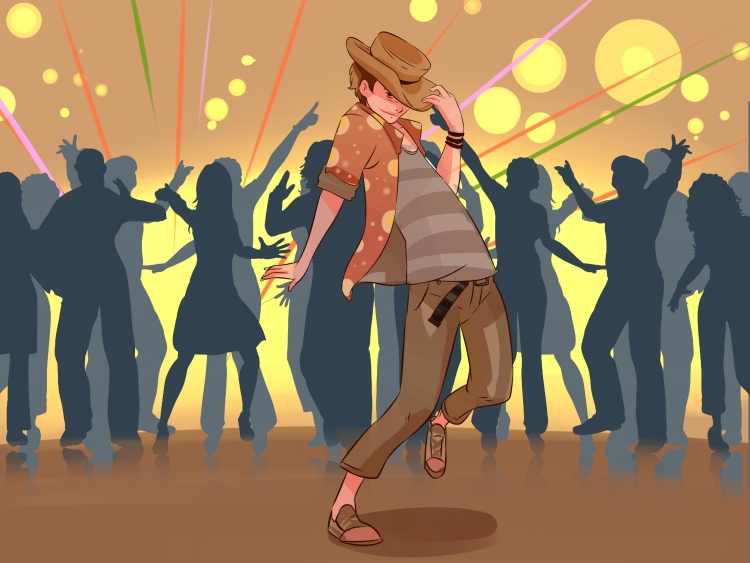 KALW Public Media, interview and online transcription. Retrieved 11/21/21 at https://www.kalw.org/show/crosscurrents/2020-03-11/dancing-out-loud-antoine-hunter-uses-dance-to-express-the-deaf-experience.
KALW Public Media, interview and online transcription. Retrieved 11/21/21 at https://www.kalw.org/show/crosscurrents/2020-03-11/dancing-out-loud-antoine-hunter-uses-dance-to-express-the-deaf-experience.
[5]Gallaudet University, Department of Art, Communication and Theatre. (no date) Techniques. General information about the dance program. Retrieved 11/21/21 at https://www.gallaudet.edu/department-of-art-communication-and-theatre/gallaudet-dance-company/techniques.
[1]Kwiatkowski, Elizabeth. (2016, May 25) "Nyle DiMarco: I didn't know a deaf person could dance as perfectly as Peta Murgatroyd and I did on 'Dancing with the Stars.'" Reality TV World. Online article. Retrieved 11/21/21 at https://www.realitytvworld.com/news/nyle-dimarco-i-didnt-know-deaf-person-could-dance-music-as-perfectly-as-peta-murgatroyd-and-i-did-on-dancing-with-stars--19858.php.
[6]Looseleaf, Victoria. (2008, Sept 29) Quoting Karen Dearborn in Deaf Dancers Speak. Dance Magazine. Online article. Retrieved 11/21/21 at https://www.dancemagazine.com/deaf-dancers-speak-2306881501.html.
Dance Magazine. Online article. Retrieved 11/21/21 at https://www.dancemagazine.com/deaf-dancers-speak-2306881501.html.
[2]Ritzel, Rebecca J.(2020, Jan 1) "Dancing while Deaf: what it's like to move to music you can't hear." Dance Magazine. Online article. Retrieved 11/21/21 at https://www.dancemagazine.com/deaf-dancers-2641619050.html.
Notes:
* Want to help support ASL University? It's easy: DONATE (Thanks!)
* Another way to help is to buy something from Dr. Bill's "Bookstore."
* Want even more ASL resources? Visit the "ASL Training Center!" (Subscription Extension of ASLU)
* Also check out Dr. Bill's channel: www.youtube.com/billvicars
You can learn American Sign Language (ASL) online at American Sign Language University
ASL resources by Lifeprint.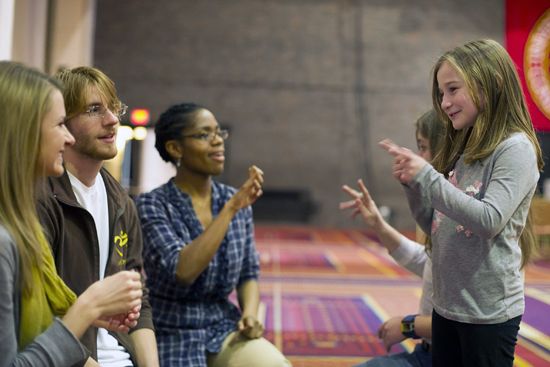 com Dr. William Vicars
com Dr. William Vicars
What It's Like to Move to Music You Can't Hear
Paul Taylor rather famously never allowed mirrors in his studio, believing they fostered bad habits. But spend a few hours in the studio with Deaf and hard of hearing dancers, and you’ll never look at your reflection in the same way again.
“Some dancers use mirrors just for vanity,” says Lexine Brooks, a Deaf dancer who began training at age 2. For nearly two decades, she’s learned choreography in all sorts of ways, including an FM system that amplified her teachers’ instructions in her ears. Today, she prefers to learn dance through American Sign Language and counting—as well as keeping an eye on the mirror.
Brooks is a member of Gallaudet Dance Company, a 65-year-old performance troupe at Gallaudet University for the Deaf and hard of hearing in Washington, DC. At one fall rehearsal, members spent an hour watching intently in the mirror while choreographer Teresa Dominick, a Gallaudet alum, held her hand high and beat out an eight-count with her fingers.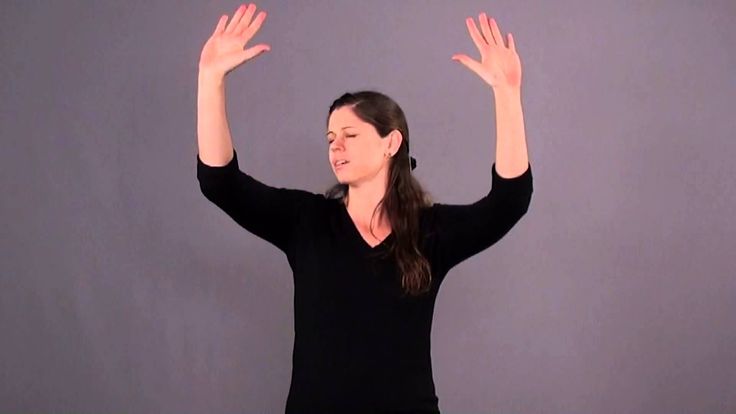 Dominick, fluent in ASL, is able to sign and count at the same time—a top priority for the dancers.
Dominick, fluent in ASL, is able to sign and count at the same time—a top priority for the dancers.
Also possible thanks to studio mirrors: Moving in sync with partners on the opposite side of their V-shape formation once Dominick started up music that not all of the dancers could hear to the same extent.
“Gallaudet Dance Company is no different than other dance groups,” Dominick says. “We just use a different language to communicate and utilize different cues.”
Dance may be a visual art form, but it’s tightly intertwined with sound. Even as the field strives to be more inclusive, learning to dance without two fully functioning ears remains a challenge. But today, dancers with full and partial hearing loss are becoming more visible, thanks to growing opportunities, high-profile role models and even Instagram.
The Drive to Dance
Brooks began dancing for the same reason as many hearing kids: She saw a live performance—in her case Swan Lake—and knew dance was something she wanted to do.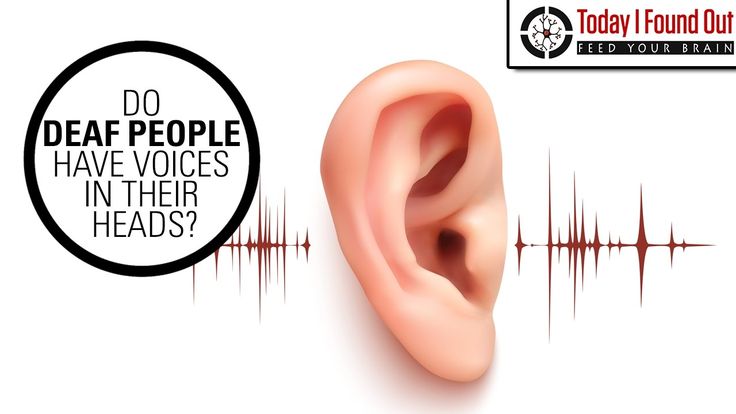 But other Deaf children are drawn to dance after feeling left out of team sports. Deaf-from-birth dancer Zahna Simon, who today serves as the assistant director at the Bay Area International Deaf Dance Festival and the Urban Jazz Dance Company, remembers being in fourth grade, loving movement and struggling to play softball. Then she visited a friend’s ballet class.
But other Deaf children are drawn to dance after feeling left out of team sports. Deaf-from-birth dancer Zahna Simon, who today serves as the assistant director at the Bay Area International Deaf Dance Festival and the Urban Jazz Dance Company, remembers being in fourth grade, loving movement and struggling to play softball. Then she visited a friend’s ballet class.
“I instantly connected with ballet as I watched the teacher physically demonstrating it, making direct corrections on the students,” says Simon. “I knew I could learn to dance by watching and wouldn’t have to struggle with following conversations.”
She no longer struggled to communicate with teammates, but Simon, like other Deaf dancers, still faced challenges.
Zahna SimonRJ Muna, Courtesy Bay Area International Deaf Dance Festival
“My teachers told me early on, ‘You are going to have to work three times harder,’ ” says Annemarie Timling, a Gallaudet dancer who is hard of hearing and trained at North Star Ballet in Fairbanks, Alaska.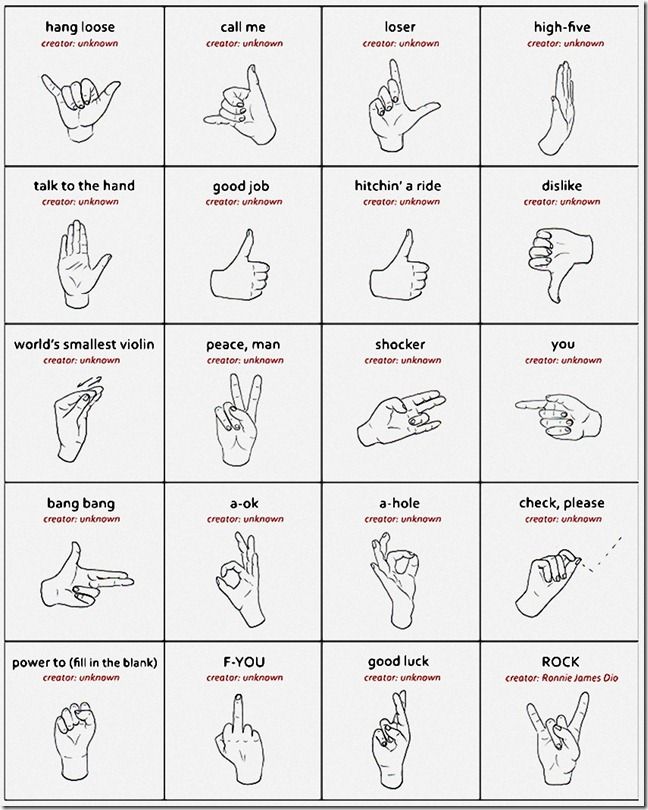 “I would go home and count through music in my head. And I was always watching, making sure I was in sync with my peers.”
“I would go home and count through music in my head. And I was always watching, making sure I was in sync with my peers.”
From childhood through high school, Alvin Ailey American Dance Theater’s Samantha Figgins trained alongside her twin sister, Jenelle. And when Figgins says “alongside,” she’s referring to years of strategically positioning herself at the barre so that if her deaf right ear was facing the instructor, she could follow her twin sister. At home and after class, Jenelle (now with Aspen Sante Fe Ballet) would review combinations with her.
“Jenelle was my angel,” Figgins says. “I wouldn’t be the dancer that I am today without her.”
Still, Figgins worried about appearing antisocial to her fellow dancers, when in reality, she never snickered in class because she couldn’t hear other dancers’ jokes. She also knew that if she lost her place, it would be nearly impossible to catch up.
“I have to stay laser-focused and make sure I’m not distracted,” she says.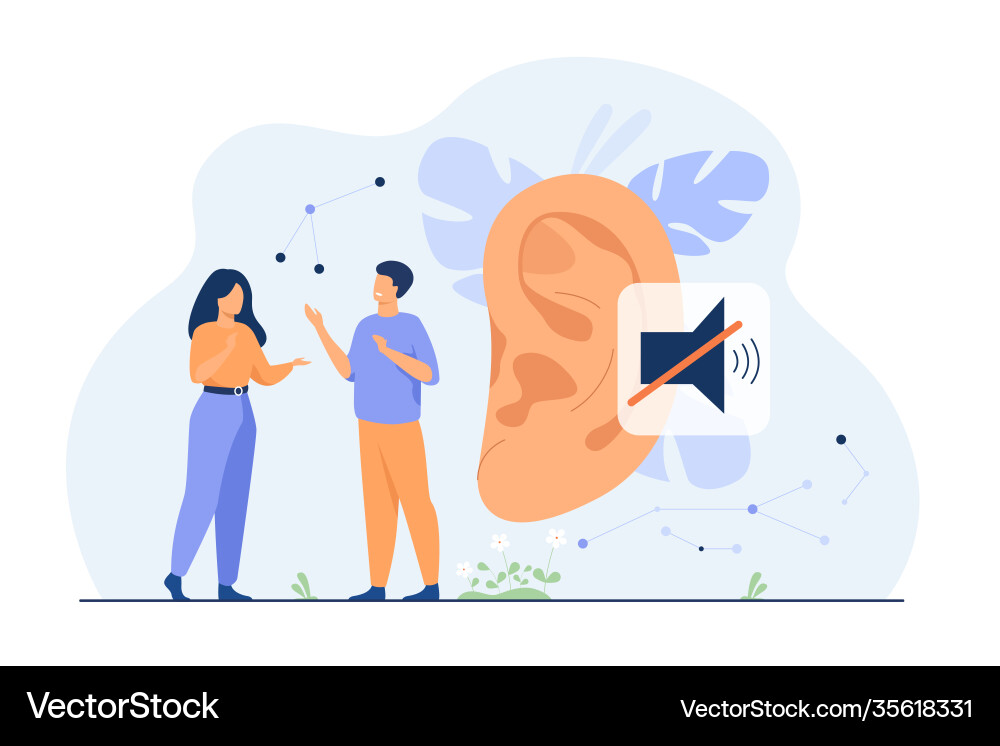 Figgins believes that sense of hyper-focus has ended up being the key to her professional career.
Figgins believes that sense of hyper-focus has ended up being the key to her professional career.
Making Space for Deafness
San Francisco dancer Antoine Hunter used to encounter people who would claim that he was the only Deaf dancer. “I would tell them there are others, but we are not given opportunities to show our artistry,” Hunter writes in an email. So in 2013, he founded what’s now known as the Bay Area International Deaf Dance Festival. “I wanted Deaf artists from all over the world to have a safe place to learn and perform.”
Each year, guests hail from as far away as Colombia, India, Russia and Taiwan for three days of workshops, panels and performances.
“We know firsthand what it’s like to be rejected from the world,” says Simon. “With the festival, our goal is that no one feels that way.”
Although the festival highlights performers working in many genres, hip hop has become especially in-demand, in part because it’s in vogue to fuse footwork with ASL. One popular 2019 workshop was taught by Deaf ASL interpreter Matt Maxey, a viral YouTuber who has gone on tour with Chance the Rapper. Maxey not only signs with his hands, but gestures with his full body, shoulders curving forward whenever he wants to especially emphasize a phrase rapped by the likes of Kendrick Lamar.
One popular 2019 workshop was taught by Deaf ASL interpreter Matt Maxey, a viral YouTuber who has gone on tour with Chance the Rapper. Maxey not only signs with his hands, but gestures with his full body, shoulders curving forward whenever he wants to especially emphasize a phrase rapped by the likes of Kendrick Lamar.
Deaf hip-hop performer Shaheem Sanchez has also amassed more than 400,000 Instagram followers by smoothly integrating signing with full-body movement. He lost his hearing at age 4 and relies on the music’s vibrations to phrase his dancing. He has also experimented with a high-tech backpack called a SubPac, a tactile audio system which transfers the energy of music directly to the body.
“The beat makes it flow,” Sanchez writes in an email. “I love feeling the music and integrating sign language into my dancing.”
Big-name artists like Jidenna and T-Wayne pop up in his DMs, making special requests for him to use their songs in his videos. He’s also in demand as a commercial dancer, and appears in Sound of Metal, a new film about a drummer losing his hearing.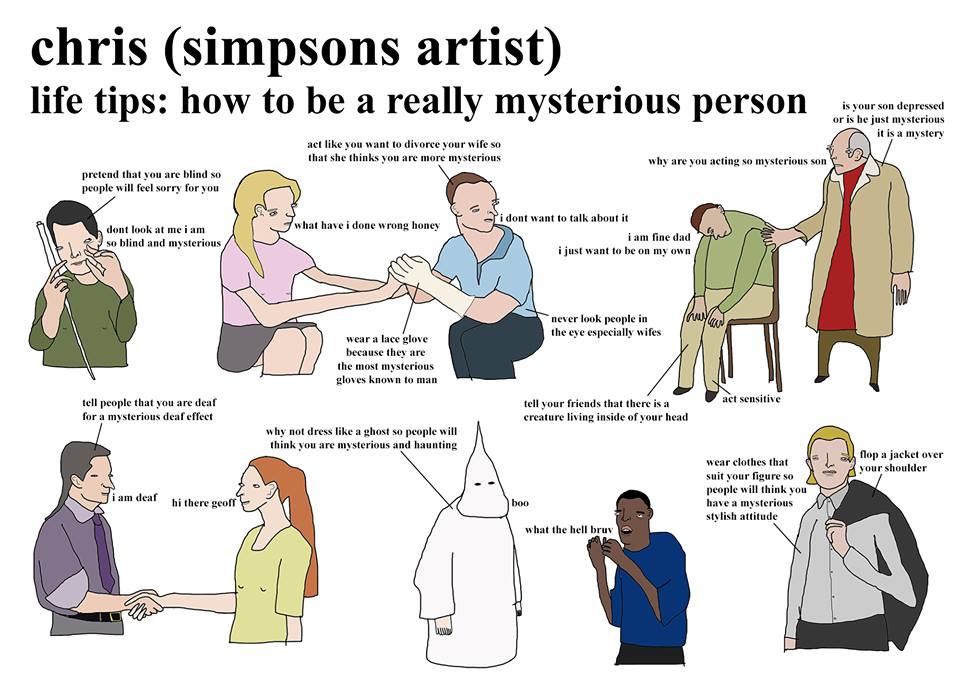
Perhaps most importantly, Sanchez is inspiring others in the Deaf community to take up dance—including students at Gallaudet—and has shown that high-profile dancers can make a difference when they go public with their hearing loss.
After years of quiet struggles, two years ago Figgins started opening up about her partial deafness, as well as the residual auditory processing disorder and balance issues—all of her injuries have been on her right side—that complicate her dancing every day.
“I’m trying to acknowledge what I’m living with, and really take ownership of my hearing loss, because it’s opened up opportunities to connect with people,” Figgins says.
Before joining Ailey, she always attempted to “pass” as a hearing dancer in auditions, including when she was hired by Complexions Contemporary Ballet. Three years later, she joined Ailey, but still never shared her struggles publicly during talks and interviews. The turning point came one night on tour with Ailey in Texas, when a fellow dancer mentioned that a girl with hearing loss had attended the performance.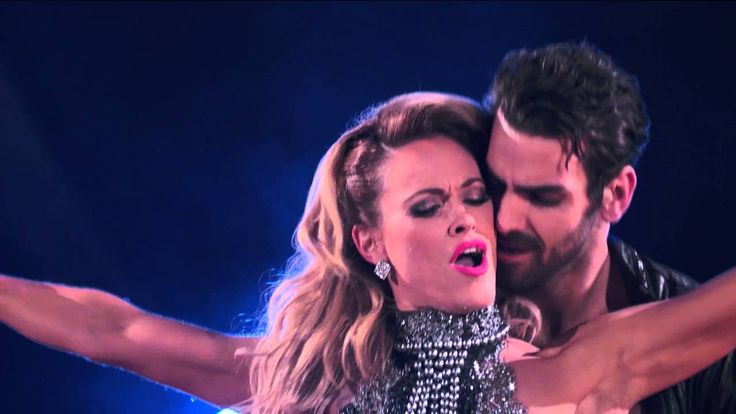 Figgins was still backstage taking her makeup off, but she reluctantly agreed to go meet the aspiring dancer and her mother.
Figgins was still backstage taking her makeup off, but she reluctantly agreed to go meet the aspiring dancer and her mother.
“We shared our stories, and that was the first time I realized it was important for me to be vocal about my struggle,” Figgins says. “We were crying, just talking about everything she was going through. I wanted to hug her, and also hug myself.”
During last year’s national Ailey tour, Figgins volunteered to perform for children in special education programs, but she wants to do more for aspiring Deaf dancers. “Maybe a mental health program, maybe a summer intensive. Something to give them tools to succeed.” Figgins says. “I’m working on a lot of things, and I’m still working on myself.”
Samantha Figgins performing in Pas De Duke
Paul Kolnik, Courtesy Ailey
Deciding to Amplify—Or Not
Choosing to augment sound through hearing aids or cochlear implants can be a complex decision, since many in the Deaf community view Deafness as a culture, not a disability.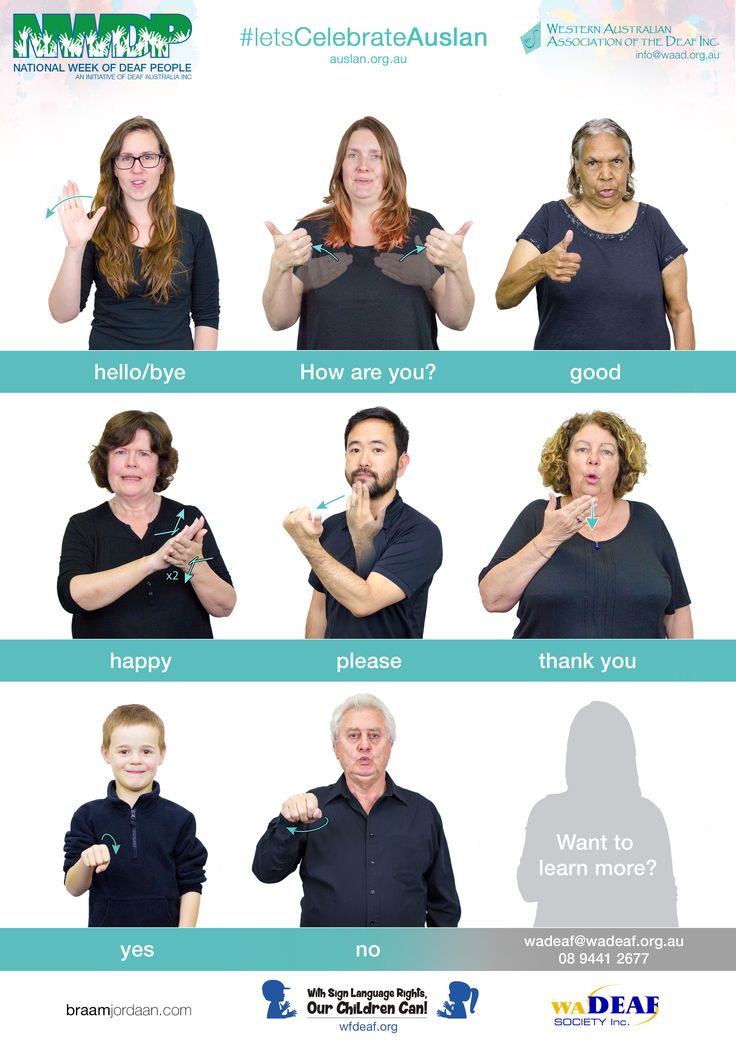 Deaf dancer Heather Whitestone, who performed on pointe when she was named Miss America 1995, faced considerable backlash when she later chose to get implants.
Deaf dancer Heather Whitestone, who performed on pointe when she was named Miss America 1995, faced considerable backlash when she later chose to get implants.
However, many dancers embrace the advances in hearing aid technology. Most members of Gallaudet Dance Company wear hearing aids. “I couldn’t function in a hearing world without them,” says Brooks.
Figgins will never forget the first time she danced Revelations wearing the small devices held in place by a wire loop over each ear.
“I thought they changed the music,” Figgins recalls, laughing. All of a sudden, she could make out individual voices in the opening choral number “I Been ‘Buked.” When she found herself on the left side of the first formation, she could hear her fellow dancers breathe, and during “Wade in the Water,” she discovered a bass line that she never knew was there.
“There’s a different texture and sensitivity to my dancing now,” Figgins says. “It was a real revelation. ”
”
But with the newfound sensitivity has also come a need for more self-care. Figgins continues to reflect on how single-sided deafness has affected her social life and self-esteem, and reserves time for “quiet” moments, when she takes out her hearing aids.
Dancing in silence. Children with Hearing Impairment Learn to Feel Music with Counting - DISLIFE
Archive The sound of the heart, the sound of rain, the voice of the mother - these sounds accompany us from birth. Everything in the world "sounds", has its own voice, music. But imagine that overnight all sounds will disappear, you will stop hearing, you will find yourself in a sound vacuum. Probably, only at this moment you can understand how hearing-impaired and deaf people feel... It is all the more difficult to imagine how they manage to dance. Specialized boarding school No. 4 for deaf and hard of hearing children in the village of Maksakovka is known far beyond Komi. The institution is famous for its strong mathematical base, as well as the children's creative group "Joy", whose members have repeatedly become laureates of all-Russian competitions.
The institution is famous for its strong mathematical base, as well as the children's creative group "Joy", whose members have repeatedly become laureates of all-Russian competitions.
Metronome to help
Children with hearing impairments end up in boarding schools: some of them can partially restore their hearing thanks to a hearing aid or cochlear implant, which is implanted under the skin behind the ear. Other pupils of the boarding school are absolutely deaf. Often hearing problems in children are accompanied by concomitant diseases (mental retardation, cerebral palsy).
“Children come to us at the age of six,” says Lydia Yakimova, teacher of music and rhythm classes and head of the Joy group. - We teach them to literally feel the music.
In the rhythm class, in addition to many musical instruments: tambourines, rattles, xylophones, wooden spoons, bells, I see a metronome. "What is he here for?" - I'm interested in Lydia Vitalievna. According to her, with the help of this device, deaf children are taught to feel the rhythm. This is a clear tempo guide that helps memorize lyrics. The teacher sets the pace of the metronome individually, gradually increasing it.
This is a clear tempo guide that helps memorize lyrics. The teacher sets the pace of the metronome individually, gradually increasing it.
We go to the choreography hall. Teacher Natalya Andreeva conducts a lesson with the smallest. The group consists of children 6-7 years old. Much that for ordinary children will not be difficult, students of the Maksakov boarding school are given with difficulty. At phonetic rhythm lessons, children are taught to clap musical passages with their hands, stomp and march in sync.
Demonstrate songs with hands
Loud music plays in the hall. But its function is not actually sound, but mostly rhythmic. Children are taught to feel the rhythm with their bodies! In the first lessons, the children put their palm on the music column, and then sit down on it. Thanks to the bass, the guys feel the music inside themselves. During the dance in the hall, an acoustic system (subwoofer) is turned on, the vibration from which is transmitted along the floor. At the same time, the musical equipment is carefully tuned so that, surrounded by many sound waves, the ear apparatus does not cause discomfort to children.
At the same time, the musical equipment is carefully tuned so that, surrounded by many sound waves, the ear apparatus does not cause discomfort to children.
- It is important to teach children the musical meter, the knowledge of which will not allow them to go astray in music. With it, you can learn dance, - says Natalya Andreeva, teacher of phonetic rhythm, choreographer.
Phonetic rhythm classes help children develop the muscles of the body, face, which positively affects the fluency and pace of speech, helps to correctly stress the words, straightens the gait and posture of children.
Such complex work gives good results: the guys dance in sync and sing with gestures. Gesture singing - combines choreography and singing. With their hands, children can draw the words to almost any song! For children who have minimal vocabulary and good visual memory, this is a great opportunity for creative expression.
Nine-year-old Roma was diagnosed with deafness, cerebral palsy.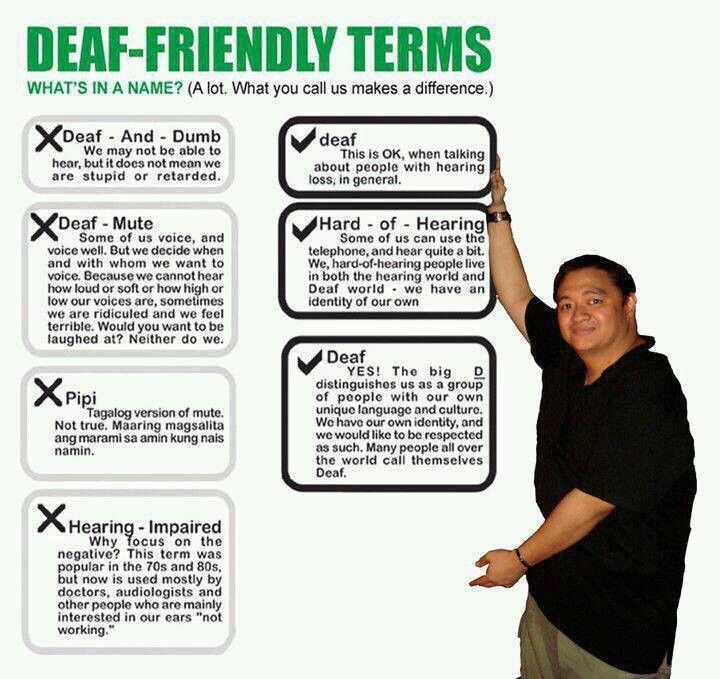 When the boy entered the boarding school four years ago, he did not know how to hold the ball in his hands. Now, along with physically healthy peers, he rhythmically claps his hands, jumps, dances, takes part in the holidays.
When the boy entered the boarding school four years ago, he did not know how to hold the ball in his hands. Now, along with physically healthy peers, he rhythmically claps his hands, jumps, dances, takes part in the holidays.
Variety star
This is the name of a 10th grade student Xenia Dzyuban in a boarding school for hearing-impaired and deaf children. “Ksyusha came to us when she was three years old. It was immediately noticeable that the girl is very plastic and feels the rhythm perfectly. This is a gift from God,” says teacher Lidia Yakimova.
Xenia has a good intellect, good visual memory, artistry. The girl easily remembers the movements and conveys them emotionally in the dance.
In 2010, at the festival of sign singing "Singing Hands", Ksenia Dzyuban took 1st place in the nomination "Solo Performance" for the performance of the composition "Victory Waltz" and 1st place in the nomination "Musical Duet" for the composition "Lady", performed jointly with Evgenia Shelyuzhak.
According to Ksyusha, most of all she likes modern pop music: “Dance lifts the mood, you can pour out your soul in it,” explains the graduate. - I like to dance at home, at school in a disco.
The girl performs at all holidays and concerts of the boarding school, performs at events at the Gymnasium of Arts under the Head of Komi. Mom and dad do not miss a single performance of their daughter.
This year Ksyusha is finishing her studies at the boarding school and is preparing to enter. She dreams of becoming a laboratory assistant: “The main thing is that chemistry does not fail,” our heroine smiles.
By the way
Exclusive inclusive dances
In the early 2000s in Ukhta, members of the city organization of the disabled and students of the local technical school organized a dance group "Duet". The uniqueness of this ballroom dance ensemble was that three participants - two girls and a young man, moved in wheelchairs. Each couple had a non-disabled partner.
Galina Zaborshchikova, one of the best trainers of the Republic of Komi, worked with the guys for several years. She put on numbers for the children, which were successfully received by guests of many city holidays, including a student ball. Subsequently, two of the members of the "Duet" created a family.
At the end of March this year in Syktyvkar a seminar "Inclusive Dances: Dance Rehabilitation" was held. Based on its results, it was decided to organize inclusive dance studios in the Komi capital.
Anastasia Pozdeeva
interviews with an international inclusive performance artist
Tools
I have been interested in dance practices for a long time, and I dreamed of dancing since childhood. At school I participated in all events, attended dance classes in Baku and dreamed of more. Joined the Unlimited: Making the Right Moves program in 2018.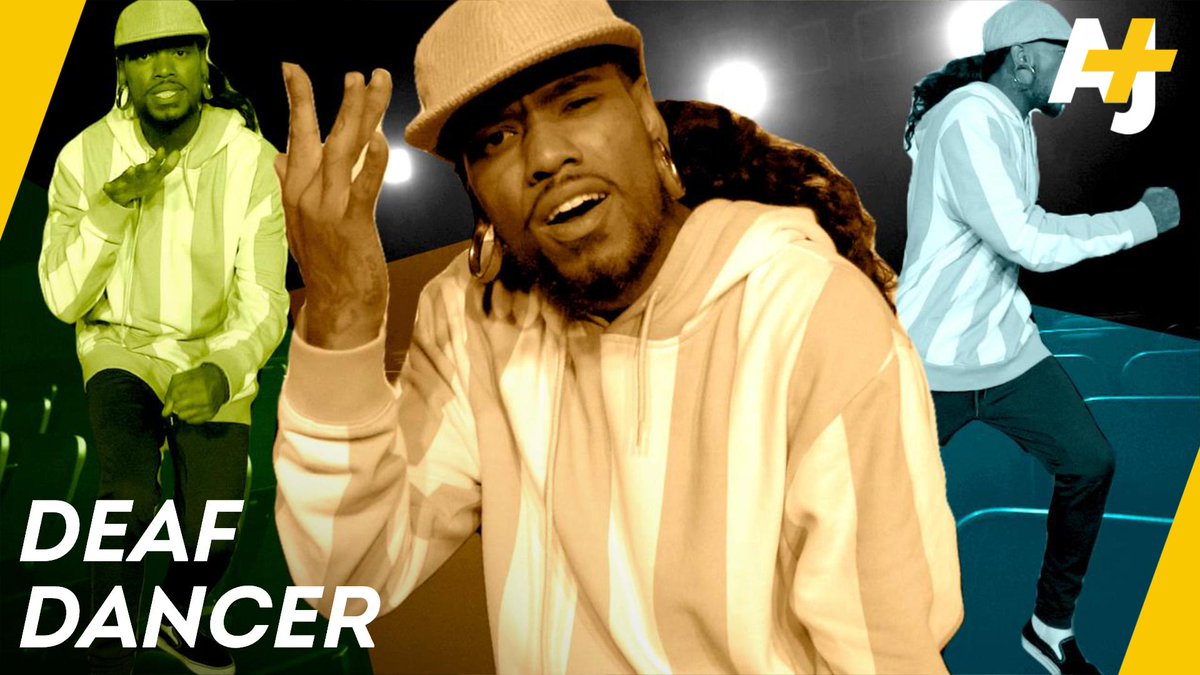 Then I took part in a dance performance that opened an international theater conference. Then I was invited to a casting for the performance "Argonauts", and I passed it. What I want to say… The first production was not easy, but it turned out to be much simpler than Argonauts. In “The Argonauts” many complex plots are intertwined - from ancient mythology to our personal stories, the variety of dance parts is impressive.
Then I took part in a dance performance that opened an international theater conference. Then I was invited to a casting for the performance "Argonauts", and I passed it. What I want to say… The first production was not easy, but it turned out to be much simpler than Argonauts. In “The Argonauts” many complex plots are intertwined - from ancient mythology to our personal stories, the variety of dance parts is impressive.
The creative process is led by British professionals - Ben Duke, Jemima Goudley, Welly O'Brien. The “team of Argonauts” includes 10 participants from four countries: Azerbaijan, Armenia, Georgia and Ukraine. A wonderful and friendly team!
I am the only deaf participant. In such a situation, finding a common language with everyone is another task! When I first got into the project, my brain boiled and exploded, I was very worried! There were individual tasks and collective ones. I looked at others and how they complete tasks, tried to bring something of my own to the creative process. Over time, it became easier, we all got to know each other and became very good friends, we became one team, we understand each other from a glance, we meet with a smile. The guys learn sign language and try very hard to communicate on an equal footing.
Over time, it became easier, we all got to know each other and became very good friends, we became one team, we understand each other from a glance, we meet with a smile. The guys learn sign language and try very hard to communicate on an equal footing.
I perform a sign song. But I can't hear anything that's going on around me. My gestures should correspond to the idea and plot, through them people should feel the situation and the situation. The task is to “verbalize” your movements, to convey the necessary emotions without words. The song is serious and complex, which means that the gestures should not be soft and smooth, but tougher, more dramatic.
Stage - great vulnerability and at the same time great freedom. A little embarrassment, a little fear, the thought that you need to control yourself... At the same time, the support of relatives and friends inspires me, they are all very proud of me, admire, worry.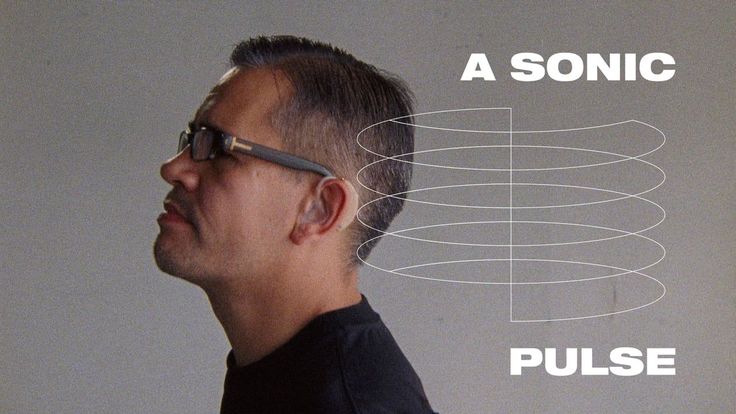 When everything is done well, it brings joy to the viewer, and the artists - satisfaction and the feeling that everything is not in vain.
When everything is done well, it brings joy to the viewer, and the artists - satisfaction and the feeling that everything is not in vain.
It is difficult to overestimate the importance of such performances on the cultural consciousness of the citizens of any country. This is further proof that people with disabilities can take an active part in social and cultural life. Yes, I'm deaf, but I sing. The deaf can dance. The worst thing you can do is stop, sit at home and lock yourself into your deafness.
Realize your dream, be brave, use every opportunity. Do not think that the deaf are some kind of “not like that”. We are the same as everyone else. In addition, there are translators who can help us exchange information. Anything can be achieved, whether you hear or not. There would be a desire.
I am here and I will move on! Committed to continue creating art, promoting inclusive dance practices, actively collaborating with artists with and without disabilities, supporting deaf friends from around the world and encouraging them to develop fully despite their deafness.


